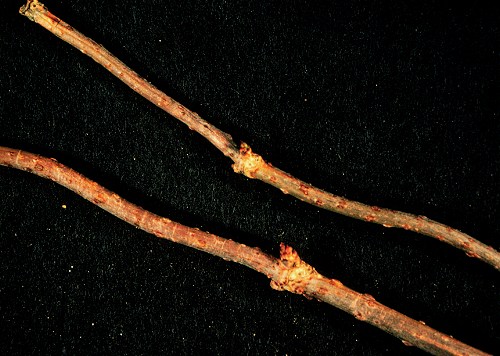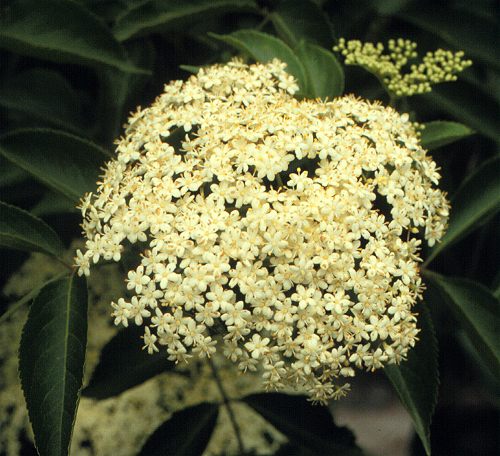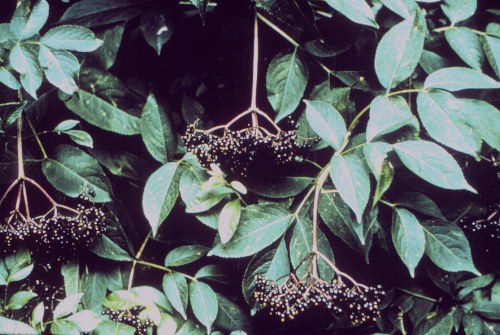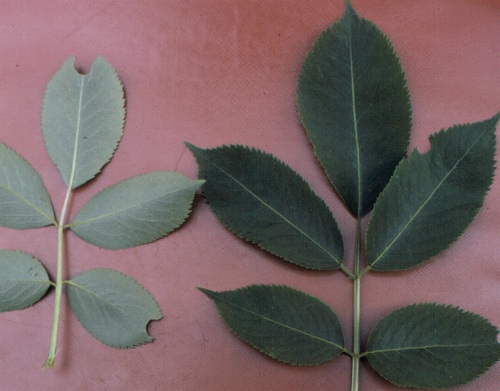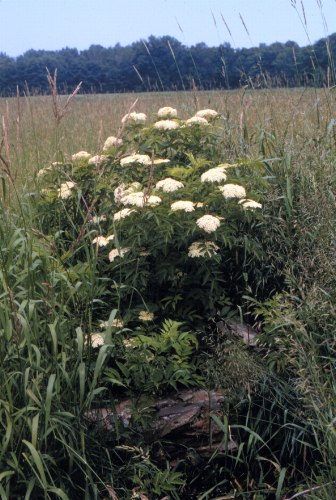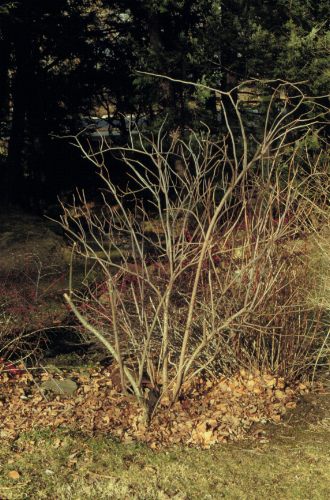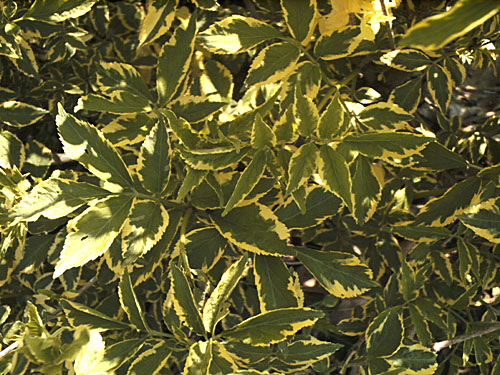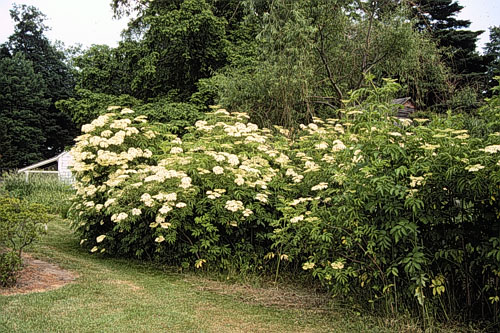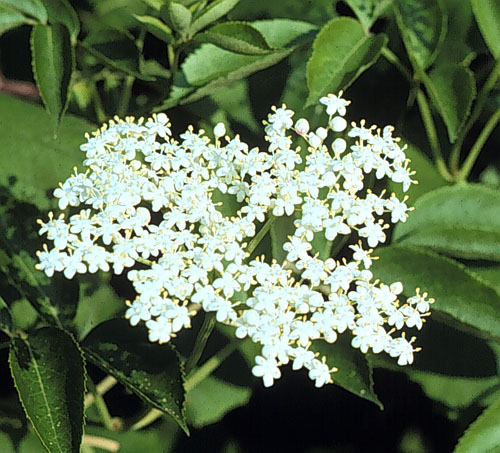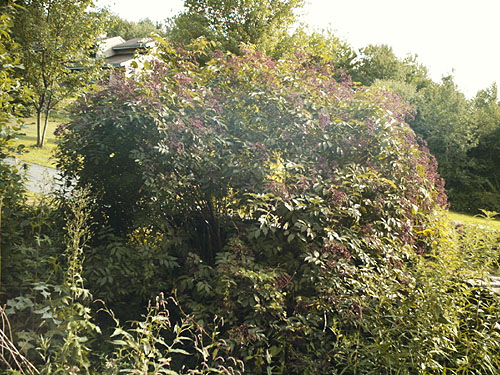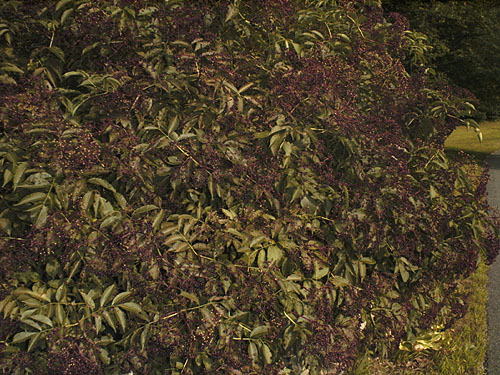Sambucus canadensis
American Elder
Caprifoliaceae
ExpandHabitat
- native to eastern United States
- hardy to zone 4, and warmer parts of 3
Habit and Form
- a deciduous shrub
- multi-stemmed
- broad and rounded crown
- arching branches
- 5' to 12' tall
- medium texture
- fast growth rate
Summer Foliage
- opposite leaf arrangement
- odd-pinnately, compound leaves
- 5 to 11 leaflets, usually 7
- 2" to 6" long
- sharply serrated
- lobed
- dark green leaf color
Autumn Foliage
- yellowish-green fall color
- not ornamentally important
Flowers
- white flowers
- blooms in July
- borne in cymes, 6" to 10 " across
- showy
Fruit
- purplish-black fruit
- drupe
- matures in September
- edible
Bark
- yellowish-gray stems
- covered in lenticels
- crescent-shaped leaf scars
Culture
- transplants easily
- prefers moist soil
- pH adaptable
Landscape Use
- naturalized effect
- bogs
- for fruit
Liabilities
- powdery mildew
- leaf spot
ID Features
- usually no terminal bud
- brown and small lateral buds
Propagation
- by seed
- by division
- by semi-hardwood cuttings
Cultivars/Varieties
'Acutiloba' (also listed as 'Laciniata') - This more demure form features leaflets that are deeply incised. It grows to 8' tall and does not fruit as well as the species.
'Adams' and 'York' - Selected for their larger, more numerous fruits, these selections are often planted by gardeners interested in the edible fruit. They are otherwise similar to the species.
'Aurea' - Probably the most common form of the species, this plant presents golden leaves that hold their color -- even in warm summer areas. It reaches 10' tall and wide, but is often pruned harshly every spring to force fresh foliage.
'Variegata' - The narrow leaflets of this selection are outlined in creamy white-yellow. It appreciates some protection from direct sun.
